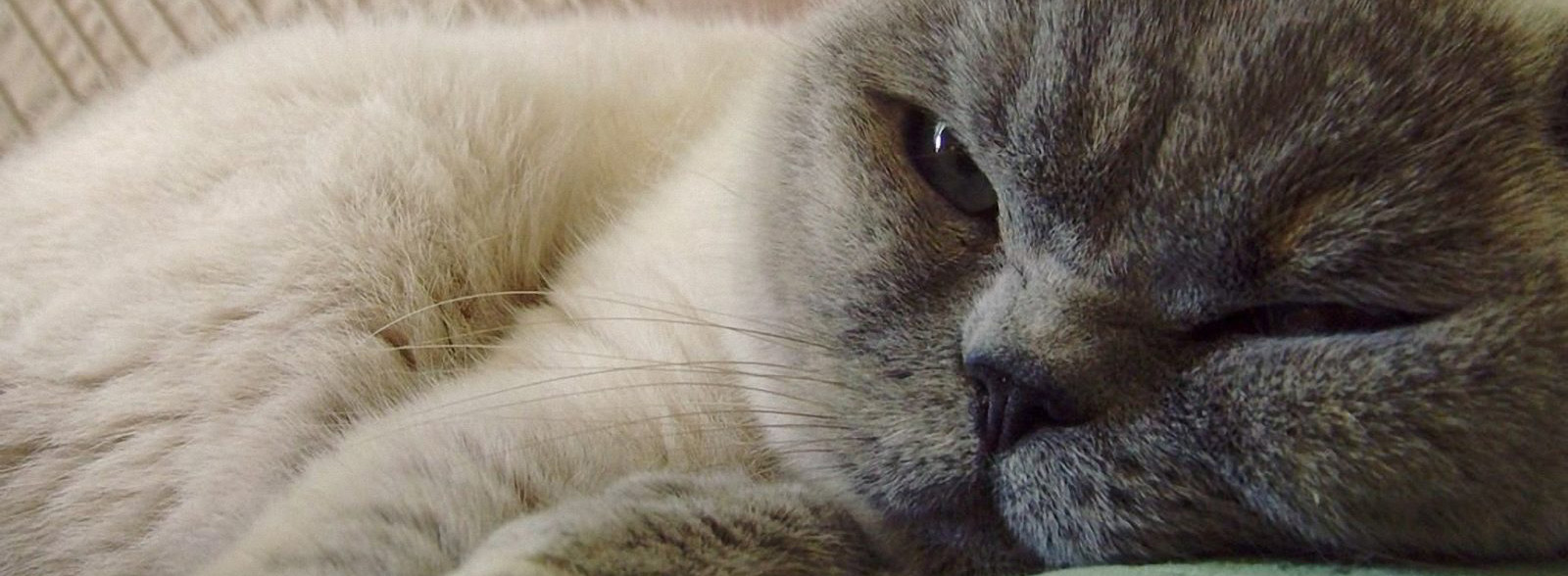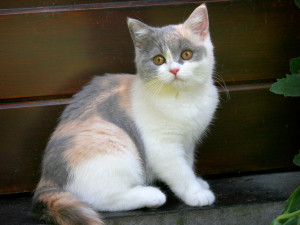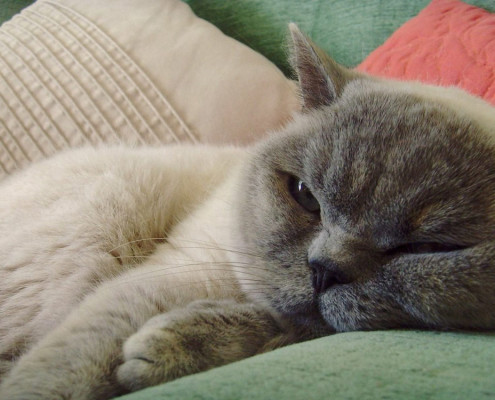British Shorthair

Meoww!!
The British Shorthair is solid and muscular with an easygoing personality. As befits his British heritage, he is slightly reserved, but once he gets to know someone he’s quite affectionate.
In 5 Words
- Slow
- Friendly
- Loving
- Adaptable
- Furry
Snapshot
Size: Large
Weight: 12 – 18 pounds
Origin: United Kingdom
Life Span: 14-20 years
Colour: black, blue, white, red, cream, chocolate, lilac, cinnamon and fawn

Characteristics
Learn About the British Shorthair
The British Shorthair origins begin with cats imported from Egypt that accompanied the Romans when they invaded Great Britain. One of the first breeds of the cat fancy, they have changed little over the centuries. As the breed developed, crosses were made with the Persian between 1914 and 1918 introducing the longhair gene.
Cats with short coats were part of the British Shorthair and cats with longhair went into the Persian breeding programs. Early on, the blue shorthair consisted of two distinct types: the sturdy, compact British with its round head and the long, elegant Russian with its triangular head. The two types competed together and were interbred before finally separating into unique breeds.
After WW1, the Governing Council of the Cat Fancy (GCCF) declared that only 3rd generation offspring of Persian/British Shorthair crosses could be shown. This reduced the breeding stock and the advent of WW II also affected the breed. After WW II, the British Shorthair lines were all but lost so breeders crossed with domestic shorthairs, Russian Blues, and Persians among others.
The British Shorthair has grown in popularity since then and gained championship status in TICA in June 1979. While longhair kittens sometimes appeared in litters, it languished in obscurity as a breed. Today, the imposing British Longhair is a fitting companion breed to the British Shorthair resembling the Persians and Angoras of the early 1900s, obtaining championship status in TICA effective May 2009.
British Shorthairs have dense, plush coats that are often described as crisp or cracking, referring to the way the coat breaks over the contours of the cat’s body. Eyes are large, round and widely set and can be a variety of colours, though the copper or gold eyes of the British blue are the best known. Their heads are round with full, chubby cheeks. Their bodies are large, sturdy, and muscular and are described as having a “cobby” build. The breed has a broad chest, shoulders and hips with short legs, round paws and a plush but not fluffy tail that ends in a round or blunt tip. These are the characteristics listed in most governing bodies breeds standards to which show cats must conform.
The males of this breed are larger than the females, and the size difference between them is more easily noticed compared to other breeds. The males’ average weight is 5-10 kilograms, whereas a female would weigh up to 5–7 kg. As with many breeds, the adult males may also develop prominent cheek jowls that distinguish them from their female counterparts.
The British Shorthair is a big soft lump of a cat. These are the ‘gentle giants’ of the cat world. They are loving and affectionate. They are good with children and other animals. They do not continuously demand human attention and are quieter than their foreign counterparts. Nor do they have the curious nature that gets many foreign breeds into trouble and if allowed out in the garden they are unlikely to roam. However they are often more than happy to be indoor cats.
The commonest health issues of the British Shorthair cats are heart diseases.
- Hypertrophic Cardiomyopathy (HCM) is the commonest form that affects young to middle aged cats. It is usually discovered during a routine annual health checkup as your vet will hear a faster heart rate, and perhaps congestion sounds in the lungs. If left undiagnosed, the most common indication of HCM is pain, associated with blood clot formation in the aorta. HCM is treated with diuretics, such as furosemide, diltiazem and nitroglycerine ointment. Some cats respond to Essential Fatty Acid (EFA) supplements and the antioxidants Selenium and vitamin E.
Other heart diseases that affect British Shorthair cats are:
- Thromboembolism, a blood clot in the aorta where the latter divides into the femoral arteries taking blood to the hind legs. Affected cats cry out and cannot use their hind-limbs, which are cool to the touch.
- Disseminated Intravascular Coagulation (DIC) that causes small blood clots in the body, is most likely triggered by other diseases and can be treated by finding and eliminating the cause.
Increased heart rate be can caused by an overactive thyroid. The heart’s chambers dilate and the blood pressure increases. The treatment should concern the whole cat, not just the hyperthyroid state.
Most breeders recommend a high-quality dry food. Care must be taken to not allow your British Shorthair to get fat, or its life span will be shortened. Middle-aged cats (5-10) are most likely to have weight problems which can usually be controlled by switching to a low-calorie food. Feed controlled portions once or twice a day; if your cat seems to be overly heavy, ask your vet for more specific advice.






